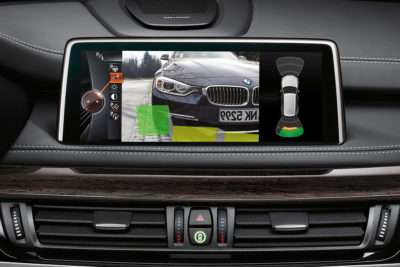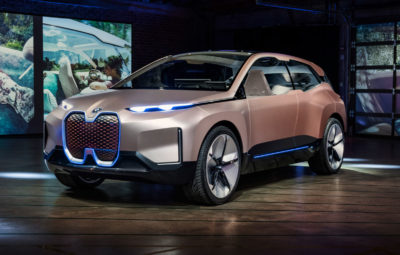A small news blurb recently caught my attention, causing me to ponder possible effects that electric cars might have on automotive safety. It also made me think about government’s role in mitigating the hazards of electric cars.
The story reported that the National Highway Traffic Safety Administration (NHTSA) will require, as of September 1, 2019, that all new pure-electric vehicles and internal-combustion/electric hybrids under 10,000 pounds must emit an audible sound when moving at speeds less than 19 miles per hour, so that visually impaired and blind pedestrians are aware of the vehicle’s approach.
But wait, there’s more: The audible alerts are intended not only to protect those pedestrians the NHTSA classifies as blind or visually impaired, but also those pedestrians who are inattentive.
I really have no problem with an electric-car noisemaker that alerts non-sighted or visually impaired pedestrians, because they are living with a medical condition that was not their choice. And I’m glad that they are out in the world, doing things and going places.
I’m not sure that I can honestly extend that acceptance to pedestrians who need the extra help because they are inattentive, especially when virtually all of the inattentive pedestrians I see are inattentive not because of a medical condition, but because they have made a choice that renders them inattentive; often, that choice involves electronic devices such as cell phones or music players, especially when combined with headphones. I’m torn between calling such pedestrians who cross the street without looking “inattentive” or “just plain stupid.” And while I’m fairly sure that an audible tone may provide sufficient warning for a sight-impaired pedestrian, I can’t see how it will help an oblivious headphone wearer.
This is an example of our government trying to make the traffic environment safer for certain pedestrians as more and more vehicles are electrified. My question is, will it work?
Apparently, the NHTSA believes that the electric vehicle’s tires and the wind wafting past the vehicle will create enough noise to alert the non-sighted and inattentive pedestrians if the vehicle is traveling at more than 19 miles per hour. I hope it has tested the heck out of that premise, because the sound of an electric car moving at 20+ mph might easily be masked by other traffic and urban noises. I could see an X540e making that kind of noise, but perhaps not a 330e.
But I guess the government knows what it’s doing. Like the rear-view-camera thing.
Since May 2018, all new light vehicles except motorcycles have been required to install rear-view cameras as standard equipment. By 2054, all light vehicles except motorcycles will be required to have them, regardless of year of manufacture. Personally, I won’t worry about that one, but the guy who buys the 60-year old M3 from my estate might.

I like rear-view cameras, especially BMW rear-view cameras. They are useful, and when used in concert with conventional rear-view and side-view mirrors, as well as checking forward, really do help when maneuvering backwards. But the operative phrase is “in concert with.” The cameras are good, but how many times have pedestrians or objects or vehicles come into the camera’s view as a surprise, whereas a glance in the mirrors might have alerted you to their presence earlier? The bottom line is that when backing up, your head should be on a swivel, scanning all the mirrors and the camera and the front of your vehicle. Yes, it’s a lot of work, but ignoring any single available input could have bad results.
Of course, in a few years, we won’t have to worry about all that, because if we start backing up and something or someone is in danger of being hit or run over, the car’s sensors will know it before you do, and stop the car for you. Some manufacturers already offer this kind of technology—and once the government decides it may save lives, it will become mandatory.
Not that this is a bad thing. After all, there are plenty of “inattentive” drivers to go along with those “inattentive” pedestrians.
In fact, carmakers are working on vehicle-to-vehicle communications through which cars will talk to each other to avoid collisions and smooth the traffic flow. I’m not sure how that will work in the parking lot when two cars across from each other start to back out at the same time. Will the cars be caught up in an “After you,” “No, after you,” loop?
Every year BMW offers more semi-autonomous driver-assistance features, like active cruise control plus stop & go, automatic lane-keeping and lane-changing, and automated straight-in and parallel parking, among others. So we will get a taste of Bimmers that try to think for us in the next couple of years.
But what I’m waiting for is the BMW iNext in 2021. BMW says that it will be all-electric with a decent range, and will be capable of autonomous driving—or at least those autonomous driving features BMW deems ready for prime time. Reports are that the iNext will be capable of Level 4 autonomous driving, which means the vehicle could perform all safety-critical driving functions and monitor road conditions for an entire trip. What we may not know until 2021 is whether BMW will take the iNext directly to Level 4, or limit it to Level 3, which could still require driver intervention in some situations.
As I have said many times, autonomous driving and the safety that both government and the auto industry hope it brings might be okay, as long as we can still take over the driving duties whenever we want, and the vehicle still feels and handles like a BMW.

Having seen photos of the BMW Vision iNext, which is kind of a pre-concept car, I hope that it handles better than it looks. First of all, I mean no offense to people who like brown cars, but I’m not one of them. Second, the grille: I know there’s no radiator, and engine-cooling through the grille is no longer needed, and the huge grille on the Vision iNext is the perfect place to put radars and cameras and sensors, but seriously?!
I also understand—and have been a willing accomplice to—BMW’s inexorable march to the point where X-vehicles comprise a majority of BMW sales worldwide. But does BMW’s potential technology flagship have to look like one?

Even so, I can’t wait to see a production version, and I hope BMW tempers the design at least a little from the Vision iNext. I believe that it will be as safe as BMW can make it, since their reputation will be on the line.
It will, of course, come with a rear-view camera and an audible tone to alert the visually impaired. But for those inattentive pedestrians, I sort of wish it would come with an automatic mini-Taser. You know, something that might grab their attention regardless of what was coming through their headphones.—Scott Blazey
[Photos courtesy of BMW AG.]





















